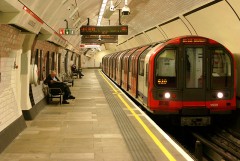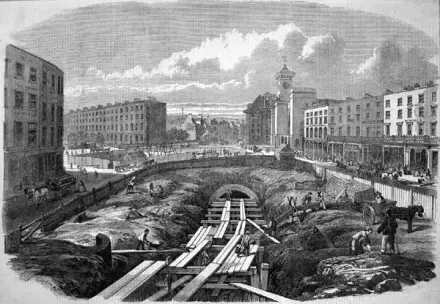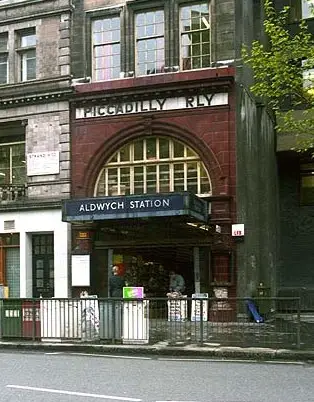
In 1854 an Act of Parliament was passed approving the construction of an underground railway between Paddington Station and Farringdon Street via King's Cross which was to be called the Metropolitan Railway.
The original purpose of this Underground railway was to serve as an inexpensive and efficient service for the working-class, in order to allow them to commute between the central and industrial areas of London and outer country districts. The mid-19th century was a time of great fascination with trains and railway lines in Great Britain and much of Europe. The widespread popular interest in this form of transport provided the much need impetus for costly projects.
The Great Western Railway (GWR) gave financial backing to the project when it was agreed that a junction would be built linking the underground railway with their mainline terminus at Paddington. GWR also agreed to design special trains for the new subterranean railway.
A shortage of funds delayed construction for several years. The fact that this project got under way at all was largely due to the lobbying of Charles Pearson, who was Solicitor to the City of London Corporation at the time. Pearson had supported the idea of an underground railway in London for several years. He advocated plans for the demolition of the unhygienic slums which would be replaced by new accommodation for their inhabitants in the suburbs, with the new railway providing transportation to their places of work in the city center.
Although he was never directly involved in the running of the Metropolitan Railway, he is widely credited as being one of the first true visionaries behind the concept of underground railways. And in 1859 it was Pearson who persuaded the City of London Corporation to help fund the scheme. Work finally began in February 1860, under the guidance of chief engineer John Fowler. Pearson died before the work was completed.

Services began in 1863 on the Metropolitan line. Trains ran at 10 minute intervals and over 40,000 passengers used the train line on its first day of operation.
There are now 12 different 'tube' lines serving 204 different stations running over 253 miles of track. As the London Underground is so historic, the need for certain destinations on the map has changed over the years, resulting in a number of stations becoming disused.

Aldwych Underground station on the Strand, is probably the most famous of these 'ghost' stations. It closed down in 1994 and is still visible at street level. Another problem associated with the age of the Tube, is the heat. The air in the stations can become stifling during the summer, but unfortunately because the Tube was invented long before air-conditioning was available, no provision was made for its installation.
The future of the Tube looks bright though, with plans afoot to extend the East London line down from New Cross Gate to Crystal Palace in 2010.